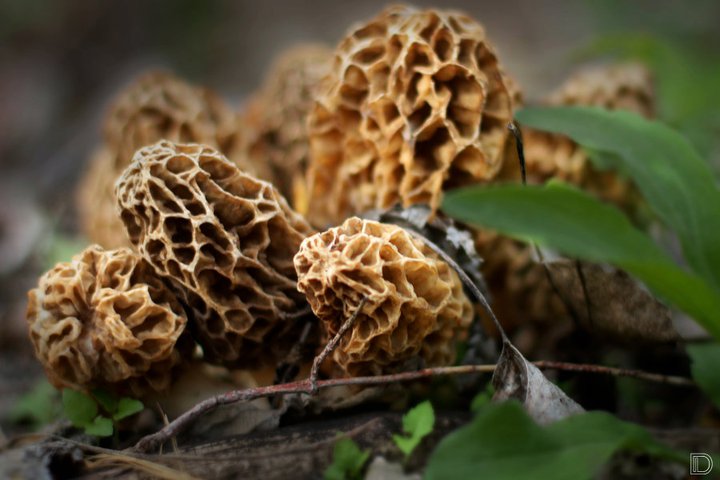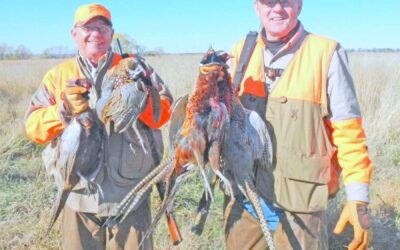“Of the Outdoors” Mother Natures Garden By Gary Howey
Springtime is when Mother Nature’s really shines, when her wild garden starts to appear.
Unlike other gardeners, Mother Nature doesn’t see the need to plant her garden in nice neat rows like those that we plant.
When gardeners see weeds and grasses growing in their garden, they bring out the weed eater and sprays comes out, but not Mother Nature as she has the right plan, allowing anything and everything to grow in her garden.
If it ever stops raining, it won’t be long before hunters in N.E. Nebraska and throughout the state will be combing the river bottoms, sandbars, wooded areas, hillsides and the ditches, hunting, wearing no camo, not worrying about scent proofing, head into the field, without a gun and still bring home something home for dinner.
It’s morel and asparagus picking time in the upper Midwest, when both of these delectable edibles poke the top of their heads out of the ground, just waiting for someone like you or I to come along and pluck them from he earth.
Before getting into, the who, what, when and where of mushroom and asparagus hunting, there is one thing that we need to remind ourselves of.
With any type of hunting or picking, we need to get permission of the landowner before entering their land. Once you find mushrooms or asparagus, it is not a bad idea to share them with the landowner who allowed you on their land.

Morel Mushrooms like schooling fish, are found in close proximity of each other and once you locate one you, generally find more. (Dustin Lutt Photo)
Morel Mushrooms
In Nebraska and other areas where floods occurred, there have been warnings posted indicating that because of the floods, there is danger that morels found on these low lying areas may be contaminated with agricultural chemicals and because of this, buyers aren’t purchasing morels in those areas.
Morels, general appear prior to wild asparagus and found throughout our area, it’s easy to recognize, delicious to eat, making them the most popular wild mushroom in the upper Midwest
An elongated fungi with an off-white stem and a crown, covered with white ridges and dark brown pits.
Varying in color from light gray to dark gray, light tan to golden brown, pale yellow to yellow to dark brown, you’ll be looking for something growing on the ground resembling a cone shaped brain.
Morels start to appear in mid to late April, when temperatures reach around 50 degrees, with the best hunting or picking happening when temperatures hit the mid 50’s.
In the upper Midwest, several indicators, let the hunters know that the morels will soon be or up.
If you have a lilac bush, crab apples or violets growing in your area, keep an eye on them. When they’re blooming, it is a good sign that you’ll find morels and t seems you can find morels in good quantities around the week of Mother’s Day, while some pickers use the almanac to get an idea as to when morels will appear.
Look in the almanac, they find the average date of the last frost, then add two weeks to that date and you should be close to the peak morel season.
Moisture, sunshine along with warmer temperatures has a lot to do with when morels appear. A week of 55-60 degree daytime temperatures after the frost is gone with no freezing temperatures at night will generally be a good time start looking.
Along with warm temperatures, moisture is also important. Many mushroom hunters say the best time to hunt for morels is after a rain, when temperatures are around 60 degrees with high humidity.
Morels appear earliest in sandy areas, on south facing slopes or in fields that have been burnt as these areas warm up quickly, retaining heat longer.
The earliest morels will appear on islands in the river, sandy areas and areas where there are dead or dying trees.
The first morel is always the toughest to locate because they blend very well with the forest or vegetated ground. Once you have found one, kneel down, looking closely, because morels are like Perch, if you find one you generally find a bunch.
One thing is certain when it comes to finding morels; there is no set rule as to where the morel might be located. Conditions change from day to day during the spring and a hillside that was barren on Monday may get a rain shower or warmer temperatures, causing the hillside to be loaded with morels by Wednesday.
My preferred method for locating mushrooms is not very scientific; it is the old meandering method, picking my way through the vegetation until I spot one.
It’s not a bad idea to stop from time to time and kneel down, getting a better view of the area as many times as morels are just pushing up through the leaves and can be verily hard to see unless you kneel down.
Because mushrooms reproduce through spores, the spores need to be on the ground in order to grow. To allow morels to throw their spores, you could use collection bags that are porous such as onion bags or some type of a bag that allows the spores back into the air.
Mushroom hunters or shroomers down south have their own language and in mushroom hunters’ jargon, a bunch of morels is as a “mess”.
Once you have found a mess of mushrooms, clean them, then prepare them and enjoy them.
The first thing you will want to do is to split the mushroom in half from the top to the bottom. The rinse them off over running water as the crooks and crannies of the mushroom may contain sand or insects. After you have rinsed them thoroughly, you’ll want to let them set in water for a short period in order to flush out sand, debris or stubborn insects.
Don’t let them soak in water for an extended period as they will soak up the water and become spongy.
Then the best part of morel hunting begins, preparing and eating them.
There are numerous ways to prepare morels including, fried, in mushroom soup or some folks like them in salads. One of my favorite ways to prepare the morels is to fry them up in some type of a light batter.
An excellent batter’s made by combining equal parts beaten eggs with milk and crushed saltine crackers.
After rinsing them, let the mushroom drip off on a dry towel and then dip in the mixture made from the beaten eggs and milk, coating them thoroughly.
Place the coated morel into a pan and cook in butter until crisp. Do not over cook them, as they will dry out.
Morels are best when prepared fresh, but if you have a good mushroom hunting season and would like to preserve or save some of them for future use, mushrooms can be dried, dehydrated, frozen or blanched.
Wild Asparagus
Wild asparagus appears about the same time as mushrooms, but I have had my bet luck finding the more mature spears after the morel season when temperatures warm up.
It will appear later than the ones found in your neighbor’s garden as gardens are clean and generally, in darker soil, the ground in a garden will warm up more quickly.
The ground that wild asparagus grows in is covered with last year’s grasses and plants, so the soil that it grows in will not warm up as quickly and appears later.
Look for last year’s plants that have gone to seed, a golden color clump or bush, and resembling dried up tumbleweed, the new growth will be growing in amongst last years plant.
Once you have found your first asparagus, scout the area carefully for new growth as the seeds of the older plants may have blown a short distance from the original plant.
The best places to look for wild asparagus is along fence lines, power lines, old railroad right of ways and anywhere birds might land or congregate.
In the fall when asparagus goes to seed, the birds pick the seeds off the plants, fly off and then pass the hard pit or seed which drops on the ground and if conditions are right, a new asparagus plant will pop up.
Asparagus, like morels, needs warm soil and moisture to grow, so sandy areas along fence lines seem to be one of those areas where asparagus comes up first.
If you find asparagus along a fence line, and there is a shelterbelt/tree planting near by, be sure to check them out closely as the birds will set in the trees and deposited seeds in these areas.
Since asparagus gets woody, it’s best to harvest the tender green hoots; this doesn’t mean that the larger taller stems won’t be edible, but they are the ones that should be left to go to seed for future crops.
Cleaning asparagus is easy, simply cut off the dried up end, rinse and prepare.
I’m one of the few who enjoy asparagus in my family, so I’ll not have much competition when it comes to preparing and eating fresh asparagus.
To prepare, I simply boil it until tender; top it with some butter substitute, a little Mrs. Dash or other seasoning and then pig out.
Morel and asparagus hunting is an excellent way to get outside and to enjoy the outdoors and the bounties that Mother Nature provides.
Gary Howey, originally from Watertown, S.D., now residing in Hartington, Neb. is a former tournament angler, fishing & hunting guide, he’s an award winning writer, producer, photographer and broadcaster. Howey was inducted into the “National Freshwater Fishing Hall of Fame” in 2017. He is also the Producer-Co-Host of the Outdoorsmen Adventures television series and Outdoor Adventures radio. If you are looking for more outdoor information, check out garyhoweysoutdoors.com, like Gary Howey’s Facebook or watch his shows on www.MyOutdoorTV.com
© 2018 Gary Howey’s Outdoorsmen Productions, All rights reserved. | Powered by Heartland Hosting, LLC | GHOP





0 Comments